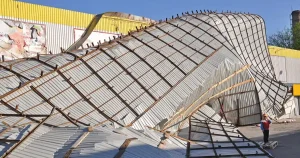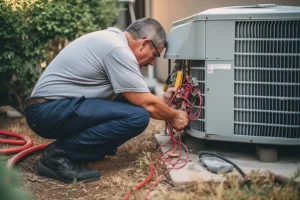The safety of a school’s roofing system is crucial for a secure learning environment. Hazards like collapses, leaks, and failures can have severe consequences. Understanding engineering principles is key to reducing these risks. By applying concepts like load calculations and material selection, engineers design roofs that withstand stressors. How can we prevent roofing hazards and ensure a safe environment for all?
Key Takeaways
- Understanding engineering principles helps ensure a secure and reliable roofing structure, reducing the risk of accidents and injuries in schools.
- Load calculations and material selection are crucial considerations in roofing design, ensuring the structural integrity of the roof and promoting a safe learning environment.
- Engineers apply environmental and external factors, such as weather and weight, to design a durable and safe roofing system for schools.
- By incorporating engineering principles, schools can prevent common hazards like water damage, structural failures, and falling debris, creating a secure space for students and staff.
- Proactive maintenance, informed by engineering principles, enables schools to identify and mitigate potential roofing hazards, reducing risks and promoting a safe school community.
Roofing Hazards in Educational Institutions
Numerous roofing hazards exist in educational institutions, posing a significant threat to the safety of students, faculty, and staff, and underscoring the importance of building codes in roofing. Defective materials, inadequate maintenance, and poor design can lead to structural failures, water damage, and falling debris. Identifying and mitigating these risks is vital to ensuring a safe learning environment.
Building Codes: The Safety Net
Adherence to strict building codes serves as an essential safeguard against roofing hazards in educational institutions, providing a structured framework for guaranteeing the integrity and safety of school rooftops. Following these codes, which encompass the importance of building codes in roofing, helps prevent accidents and guarantees students and staff can focus on learning in a safe environment.
Engineering Principles for Secure Roofs
A school’s roofing system, comprising a complex interplay of structural components, requires a deep understanding of fundamental engineering principles to ensure a secure and reliable structure that can withstand various environmental and external factors. Adhering to the importance of building codes in roofing, engineers must consider factors such as load calculations, material selection, and structural integrity to guarantee a safe and durable roofing system.
Compliance and Risk Reduction Strategies
By incorporating proactive risk reduction strategies into the roofing design and installation process, schools can minimize the likelihood of accidents and promise a safe learning environment. Adherence to building codes and regulations, such as the Importance of building codes in roofing, confirms compliance and reduces risk. This proactive approach enables schools to provide a secure and protected space for students, teachers, and staff.
Proactive Maintenance for Safe Schools
School administrators can greatly reduce roofing hazards through regular, systematic inspections and prompt repairs, thereby ensuring a safe and healthy environment for their students and staff. By adhering to the importance of building codes in roofing, proactive maintenance helps identify potential issues before they become major problems, mitigating risks and promoting a sense of security and belonging within the school community.
Frequently Asked Questions
What Are the Consequences of Ignoring the Importance of Building Codes in Roofing?
Ignoring building codes in roofing can lead to catastrophic consequences, including structural collapse, injuries, and fatalities, as well as significant financial losses and reputational damage to schools and their administrations.
How Often Should Roofing Inspections Be Conducted in Schools?
Regular roofing inspections are vital to guarantee school safety. Ideally, schools should conduct inspections semi-annually, after severe weather events, and following significant repairs or modifications to identify potential hazards and prevent accidents.
Can Roofing Materials Be Recycled or Repurposed After Replacement?
Roofing materials can be recycled or repurposed after replacement, depending on their type and condition. Asphalt shingles can be recycled into asphalt pavement, while metal roofs can be refurbished and reused, reducing waste and promoting sustainability.
Are There Any Roofing Designs That Can Resist High Winds and Storms?
Yes, various roofing designs can resist high winds and storms, including hip roofs, gable roofs with reinforced trusses, and curved roofs with aerodynamic shapes, all of which reduce wind uplift and structural stress.
Can Roofing Safety Be Compromised by Poor Gutter Maintenance?
Poor gutter maintenance can indeed compromise roofing safety by causing water accumulation, leading to structural damage, and increasing the risk of collapse, emphasizing the importance of regular gutter inspections and maintenance to safeguard roofing integrity.
Conclusion
Ultimately, understanding engineering principles is essential for ensuring roofing safety in schools. By applying load calculations, material selection, and structural integrity considerations, engineers can design roofs that withstand environmental factors and external influences. Compliance with building codes and proactive maintenance strategies further reduce risks. In summary, the integration of engineering principles in roofing design and maintenance is vital for providing a safe learning environment in educational institutions.
Also Read: Benefits of Off-Grid Van Lifestyle


